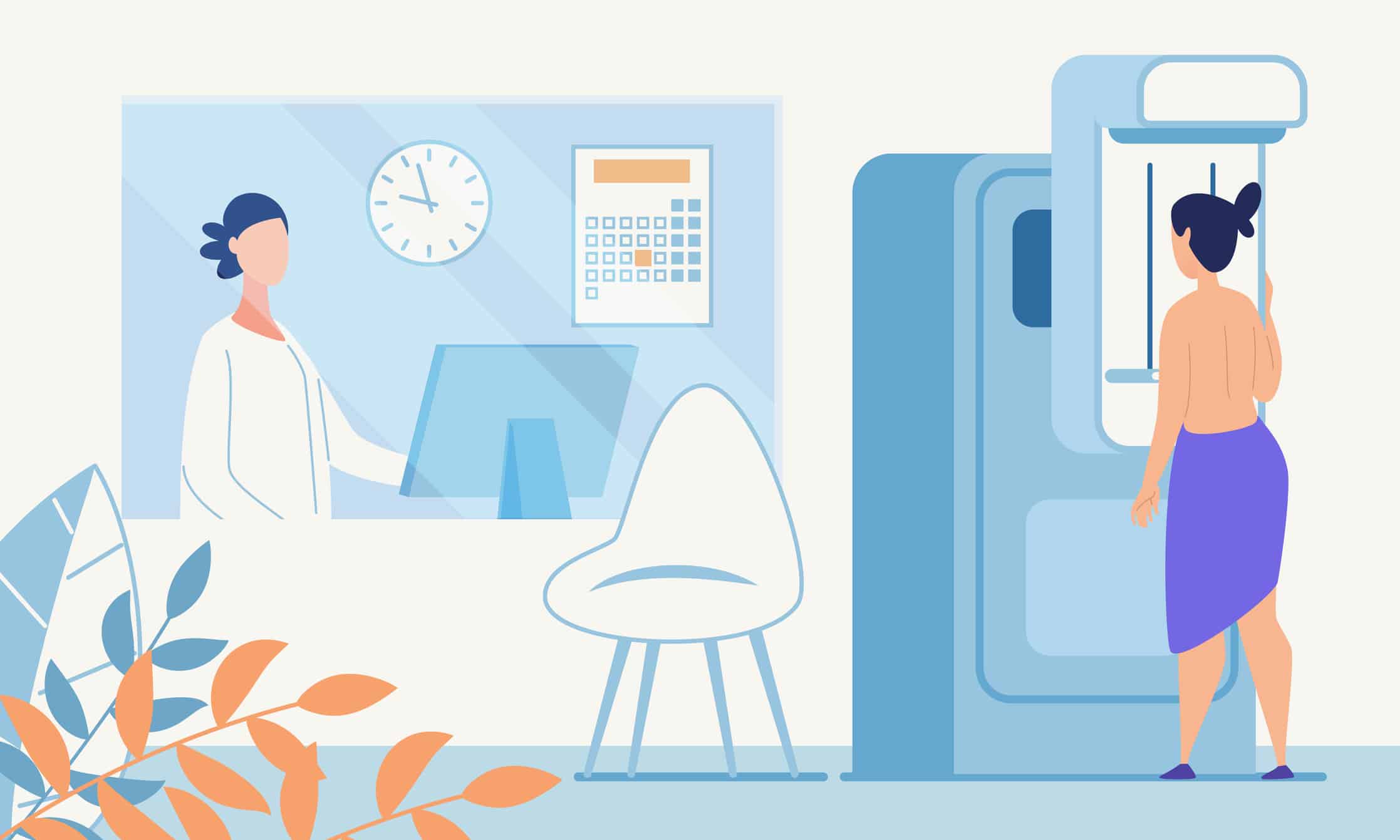If you are a woman in your 40s, then you are likely aware it’s time to start scheduling your yearly digital mammography screening.
What is a digital mammogram and why is it so important?
A mammogram is a simple, non-invasive X-ray used in breast cancer screening. Mammograms can detect cancer early — at the time when it is most treatable and the treatments themselves are less extensive and risky.
Mammography has helped reduce breast cancer in the U.S. by nearly 40 percent since 1990. These tests are incredibly important as breast cancer rates are very high. According to the American Cancer Society, one in eight women in the U.S. will develop invasive breast cancer.
This article will walk you through the most common questions about mammograms and what to expect during your own.
What is a mammogram?
A mammogram is an X-ray of the breast used to detect early signs of breast cancer and other abnormalities. Mammograms are the best way to detect breast cancer early before symptoms arise.
Who needs a mammogram?
Generally, women between the ages of 40 and 45 are recommended to have a yearly mammography screening. Women in their 40s are most at risk to develop breast cancer. Once a woman turns 50 or 55, the screens may reduce to every two years. You should discuss when to get a mammogram with your doctor.
How is a mammogram done?
A mammogram test may be performed at your doctor’s office, at a special radiology and imaging center, or at a mammogram clinic. You will need to remove your top and bra for the procedure. For this reason, wearing a skirt or pants on the day of your mammogram may be preferable to a dress. Additionally, do not wear deodorant, perfume, or powder because these products can interfere with X-ray results.
During the screening, you will stand in front of the mammography X-ray machine, and a technician will place your breast on a clear plastic compression plate while another plate firmly presses your breast from above. The plates hold the breast in place and flatten it while the X-ray is taken. This is repeated to get a side view of the breast. Then, the same images are taken of the second breast.
The technician will check the images to make sure they are clear and do not need to be retaken. Note that the technician cannot tell you the results of the mammogram; they need to be interpreted by a radiologist — a doctor with special training to examine this kind of X-ray.
3D Digital Mammography Screening: Is It Better?
The standard mammography procedure is a 2D screening. However, many facilities are now using 3D digital mammography screening technology to provide more accurate imaging results. This 3D technology has been found to reduce false-positive results compared to 2D technology.
The procedure itself is very similar to a 2D mammography screening. The technician will take images of the breast from many different angles and then compile these images to create a digital recreation of the breast. This 3D representation shows the image in much more detail, allowing for more accurate and precise detection of abnormal tissue growth.
What does a mammogram feel like?
Most women find a mammogram to be uncomfortable. You will feel pressure, discomfort, and perhaps some pain. The process only takes a few minutes to complete, however. The extent of the discomfort depends on the size of your breast, how much it needs to be flattened, and the skill of the technician.
Scheduling your mammogram soon after the completion of your period is recommended, as many women’s breasts are more tender during the week of or the week just before their period.
When can you expect results?
You will receive your mammogram screening results within a few days or weeks, depending on how busy the mammogram center or radiology center is. Once a radiologist looks at your X-ray, they will report the results directly to you or your doctor, who will then contact you. Typically, if a concerning abnormality is found, you will be contacted earlier.
Do I need to continue getting digital mammography screens if my results are normal?
Typically, yes. Even if your digital mammogram results are normal, your doctor may recommend you continue to get an annual or bi-annual check, depending on your age and level of risk. Mammograms are most effective when compared to previous screens, so any changes are noted.
What if my mammogram is abnormal?
If the doctor finds an abnormality in your mammography screen, it does not always mean there is cancer present. If abnormalities are found, your doctor will likely recommend additional testing or perform another mammogram. You may be referred to a specialist. These measures will help to diagnose the abnormalities and determine if any further action is necessary.
Find a Digital Mammogram Near Me
For more information about breast cancer risk factors or to make an appointment with a Little Rock OBGYN, contact The Woman’s Clinic! You can reach us by calling (501) 664-4131, or fill out our online form and we’ll get back to you.

